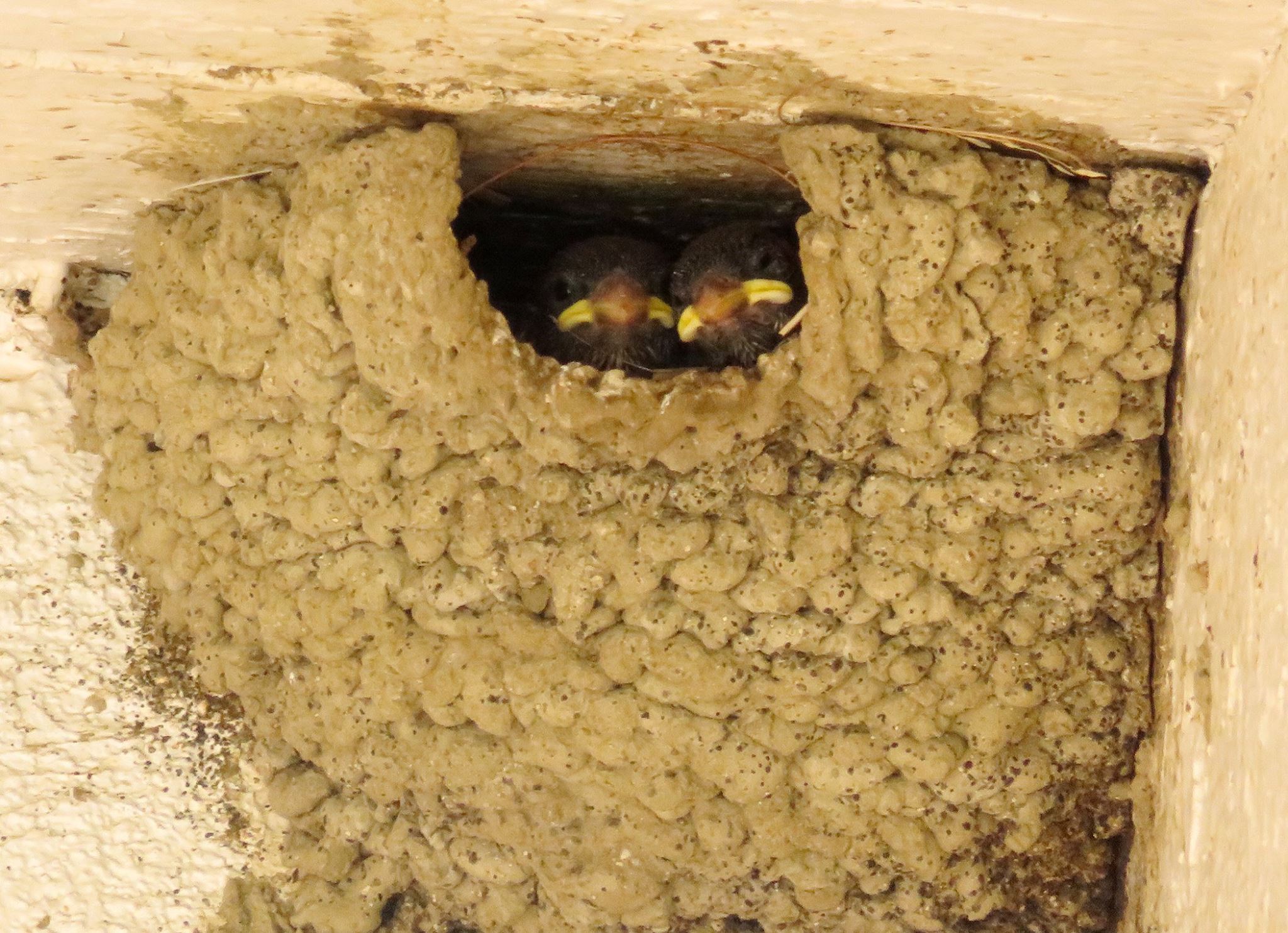The Los Angeles County Board of Supervisors is scheduled to hold the last public hearing and adopt the One Valley One Vision city-county general plan Tuesday.
Already approved by the Santa Clarita City Council and recommended for adoption by a 4-1 vote of the county’s Regional Planning Commission, the plan would put the city and county on the same page – formally, for the first time in the city’s 24-year-history – when it comes to planning roads, schools, parks, neighborhood development and the like.
In the works for more than a decade, OVOV is intended to establish “compatible goals, objectives and policies that would provide cohesive guidance for development and conservation within the entire Santa Clarita Valley, which both jurisdictions (city and county) share.”
From the county’s perspective, OVOV replaces the Santa Clarita Valley Area Plan that the county adopted in 1984 (prior to cityhood) and overhauled in 1990.
From the city’s perspective, it replaces the Santa Clarita General Plan that the city adopted in 1991.
Since those dates, each entity has been working from its own “roadmap” for development, and they haven’t always meshed too well. Now they will.
Getting to this stage has been a bumpy ride. Talks about the city and county working together started in the late 1990s but were an on-again, off-again affair as the two government agencies squabbled over controversial topics such as the potential annexation of westside communities. OVOV was put on the back burner for months and even years at a time.
Recent years have seen more convivial relations between the city and county, and OVOV has been steadily moving forward. But over the past decade, outside factors intervened to make it take longer than it might have otherwise taken – such as new state laws on climate change. More work needed to be done to bring the plan into compliance.
Now that work is done, and it’s ready to become law.
~ DETAILED DESCRIPTION FOLLOWS ~
CEQA FINDINGS AND STATEMENT OF OVERRIDING CONSIDERATIONS FOR THE SANTA CLARITA VALLEY AREA PLAN UPDATE (ONE VALLEY ONE VISION)
1.0 INTRODUCTION
1.1 PURPOSE
The Board of Supervisors (“Board”) of the County of Los Angeles (“County”) hereby certifies that the Board has reviewed and considered the information contained in the Final Environmental Impact Report (“EIR”), identified below, for the Santa Clarita Valley Area Plan Update (“proposed Area Plan”). The Board further certifies that the Final EIR has been completed in compliance with the California Environmental Quality Act (“CEQA”), Public Resources Code §§21000 et seq.; the State CEQA Guidelines, California Code of Regulations, Title 14, §§15000 et seq. (“CEQA Guidelines”); and, the County’s Environmental Document Reporting Procedures and Guidelines, and that the Final EIR reflects the independent judgment of the Board. In certifying the Final EIR as adequate under CEQA, the Board hereby adopts these “CEQA Findings and Statement of Overriding Considerations for the Santa Clarita Valley Area Plan Update (One Valley One Vision).”
The proposed Area Plan is a component of the County General Plan and is intended to provide focused goals, policies, and maps to guide the regulation of development within the unincorporated portions of the Santa Clarita Valley (“Valley”). This updated Area Plan replaces in its entirety the Area Plan adopted by the Los Angeles County Board of Supervisors on February 16, 1984, and subsequently updated on December 6, 1990, which had previously served as the basic planning tool for the unincorporated portions of the Valley. This Area Plan is intended to serve as a long-term blueprint for development over the next approximately 20-year planning period, except where specific policies set forth in the Plan address other target dates.
The proposed Area Plan’s potentially significant environmental effects were identified and analyzed in the Draft EIR (September 2009), Revised Draft EIR (November 2010), and Final EIR (January 2012) (collectively, “Final EIR”).
Public Resources Code Section 21081 and CEQA Guidelines Section 15091 require that a public agency prepare written findings for identified significant impacts, accompanied by a brief explanation of the rationale for each finding. Specifically, CEQA Guidelines Section 15091 states, in part, that:
(a) No public agency shall approve or carry out a project for which an EIR has been certified which identifies one or more significant environmental effects of the project unless the public agency makes one or more written findings for each of those significant effects accompanied by a brief explanation of the rationale for each finding. The possible findings are:
(1) Changes or alterations have been required in, or incorporated into, the project which avoid or substantially lessen the significant environmental effects as identified in the final EIR.
(2) Such changes or alterations are within the responsibility and jurisdiction of another public agency and not the agency making the finding. Such changes have been adopted by such other agency or can and should be adopted by such other agency.
(3) Specific economic, legal, social, technological, or other considerations, including provision of employment opportunities for highly trained workers, make infeasible the mitigation measures or project alternatives identified in the final EIR.
If significant impacts cannot be avoided or reduced to a less-than-significant level, the decisionmaking agency is required to balance, as applicable, the benefits of the project against its significant unavoidable environmental impacts when determining whether to approve the project. (Pub. Resources Code, §21081; CEQA Guidelines, §15093.) If the benefits of a project outweigh the significant unavoidable adverse environmental impacts, the adverse effects may be considered “acceptable” with adoption of a statement of overriding considerations. (Pub. Resources Code, §21081, subd. (b); CEQA Guidelines, §15093.)
The Final EIR for the proposed Area Plan identified potentially significant effects. However, the Board finds that the inclusion of certain specified mitigation measures as part of the adoption of the proposed Area Plan will reduce most, but not all, of those effects to less-than-significant levels. Those impacts, which are not reduced to less-than-significant levels, are identified and overridden due to specific benefits of the proposed Area Plan. (See Section 8.0, Statement of Overriding Considerations, below). Therefore, in accordance with CEQA (Pub. Resources Code, §21081; CEQA Guidelines, §§15091-15092), the Board certifies the Final EIR for the proposed Area Plan, adopts these findings, the statement of overriding considerations, and the attached Mitigation Monitoring and Reporting Program (“MMRP”), and adopts the proposed Area Plan.
1.2 ORGANIZATION AND FORMAT OF FINDINGS
Section 1.0 contains a summary description of the proposed Area Plan and background facts relative to the environmental review process. Section 2.0 identifies the significant impacts of the proposed Area Plan that cannot be mitigated to a less-than-significant level (even with all feasible mitigation measures having been identified and incorporated into the proposed Area Plan), while Section 3.0 identifies the potentially significant impacts of the proposed Area Plan that would be mitigated to a less-than-significant level with implementation of the identified mitigation measures. Section 4.0 identifies the proposed Area Plan’s potential environmental impacts that were determined not to be significant. Section 5.0 discusses the feasibility of the proposed Area Plan alternatives, and Section 6.0 presents the statement of overriding considerations.
1.3 SUMMARY OF PROJECT DESCRIPTION
The proposed Area Plan is part of One Valley One Vision (“OVOV”), a joint planning effort between the County, City of Santa Clarita (“City”), and Valley residents and businesses to create a single vision and set of guidelines for the future growth of the Valley and preservation of natural resources. The OVOV Planning Area combines two geographical areas, the unincorporated area of the County within the Valley and the City’s corporate limits. The OVOV Planning Area includes the County communities of Agua Dulce, Castaic, Fair Oaks Ranch, San Francisquito Canyon, Sunset Pointe, Val Verde, and West Ranch, the future County community of Newhall Ranch, and the City communities of Canyon Country, Newhall, Saugus, and Valencia. This proposed Area Plan focuses on the environment within the County’s unincorporated limits and outside of the City’s boundaries and adopted Sphere of Influence, but within the OVOV Planning Area. This area is referred to as the County’s Planning Area as development within the unincorporated portions of the County will be directly guided by the maps and policies contained in the proposed Area Plan.
The proposed Area Plan has been prepared to ensure consistency with both the County’s comprehensive General Plan and the City’s General Plan. The proposed Area Plan does not include all of the mandatory General Plan elements, such as Housing, because the County’s overall General Plan addresses all these mandatory issues on a County-wide basis. The proposed Area Plan does contain detailed background, maps, goals and policies regarding land use and circulation planning, and policy-level discussions of other issues relating to specific needs and characteristics of the Santa Clarita Valley, such as open space preservation, trail planning, hillside development, and historic preservation.
The proposed Area Plan serves as a foundation for making land use decisions based on policies related to land use, transportation, population growth and distribution, open space, resource preservation and utilization, air and water quality, noise impacts, public safety, infrastructure, and other related physical, social, and economic factors. In addition to serving as a basis for local decision making, the proposed Area Plan establishes a clear set of development guidelines for citizens, developers, neighboring jurisdictions and agencies, and provides the community with an opportunity to participate in the planning process. The purpose of the proposed Area Plan is to comply with state requirements and to provide the County with a comprehensive, long-range policy guideline for future development within the unincorporated Santa Clarita Valley.
In accordance with California Government Code Section 65302, the proposed Area Plan contains the following six elements:
. Land Use
. Conservation and Open Space (combined in one section in the proposed Area Plan)
. Safety
. Circulation
. Noise
1.4 PROJECT OBJECTIVES
The purpose of the proposed Area Plan is to provide policies incorporating the values and principles that will guide the County’s land use decisions within the unincorporated Santa Clarita
Valley. Therefore, the proposed Area Plan outlines 36 Guiding Principles described below, which were agreed upon by the County and City. The principles will be carried out with the application of common standards for land use development, infrastructure, and resource management, as appropriate or applicable. The principles implement the vision for the Santa Clarita Valley, which is intended to sustain and enhance environmental resources, economic vitality, and the social well-being of its residents. The following is the vision for the Santa Clarita Valley from the Vision and Guiding Principles statement prepared for the OVOV Planning Area:
1.4.1 Vision
The Santa Clarita Valley is a wonderful place to live, work, play, and raise a family. The Valley is a mosaic of unique villages with growing ethnic diversity, each with individual identities, surrounded by a greenbelt of forest lands and natural open spaces. These villages are unified by the Valley Center activity core, a beautiful environmental setting that includes the skyline and Santa Clara River, a vibrant growing economy, and a rich history of common social values. The Valley’s network of roads, transit, and trails links these villages and provides access to a wide offering of quality education, cultural, recreation, and social services and facilities.
Life in the Santa Clarita Valley will continue to be exciting, enjoyable, and rewarding through a board range of housing types, an increase in quality jobs in close proximity to all neighboroods, and transit-oriented villages complemented by excellent schools, attractive parks and other recreational amenities, expanded trail networks, and preserved natural resource areas. As the Valley moves forward, it is crucial that sound and sustainable planning principles shape new villages and enhance established neighborhoods. Implementing policies to increase mobility and accessibility, manage traffic congestion, improve air quality, and conserve water and energy resources throughout the Valley is essential to maintain the overall high quality of life.
1.4.2 Guiding Principles
Management of Growth
1. Growth in the Santa Clarita Valley shall account for the visions and objectives for each community and must be consistent with principles, as subsequently defined in this document [the proposed Area Plan], for the protection of the Valley’s significant environmental resources. It must also be based on the availability of or ability to provide adequate infrastructure, schools, and public services, and must be carefully planned to benefit the community’s economy, lifestyles, and needs.
2. Growth shall occur within and on the periphery of previously developed areas, rather than as “leapfrog” development or in areas of critical environmental habitat or natural hazards, and taking into consideration accessibility to infrastructure and public services.
3. Development shall be prioritized in areas for infill and redevelopment sites within currently developed areas consistent with community character objectives and those for which the City and County have approved entitlements. Commitments for new development outside of these areas shall be made in accordance with the other principles defined in this document [the proposed Area Plan].
4. Higher density development, including multi-family housing and mixed use projects that integrate housing with commercial uses, shall be targeted in areas adjacent to existing and planned transit corridors, stations, and key activity centers, such as the Valencia Town Center and portions of Newhall and Soledad Canyon Road.
Environmental Resources
5. The natural buffer area surrounding the entire Valley, which includes the Angeles National Forest, Santa Susana, San Gabriel, Sierra Pelona, and Del Sur mountains, shall be preserved as a regional recreational, ecological, and aesthetic resource.
6. The Santa Clara River corridor and its major tributaries shall be preserved as open space to accommodate storm water flows and protect critical plant and animal species (riparian vegetation, fish, etc.).
a. Uses and improvements within the corridor shall be limited to those that benefit the community’s use of the river in its natural state.
b. Development on properties adjacent to, but outside of the defined primary river corridor, shall be located and designed to protect the river’s water quality, plants, and animal habitats, controlling the type and density of uses, drainage runoff (water treatment), and other relevant elements; and designed to maximize the full range of river amenities, including views and recreational access, while minimizing adverse impacts to the river.
7. The Santa Clarita Valley’s prominent ridgelines shall be preserved and hillside development shall be limited to protect their valuable aesthetic and visual qualities intrinsic to the Valley landscape.
8. Development shall be located and designed to minimize the impact on the Valley topography, emphasizing the use of grading techniques for development pads that mimic the natural topography in lieu of repetitive flat pads to the extent feasible and consistent with a community’s open space objectives.
9. Development shall be located and designed to protect oak, sycamore, and other significant indigenous woodlands.
10. Biological resources in the designated Significant Ecological Areas (“SEAs”) shall be protected through the siting and design of development to account for and be highly compatible with their resources. Specific development standards shall be identified to control the types of land use, density, building location and size, roadways and other infrastructure, landscape, drainage, and other elements to assure the protection of the critical and important plant and animal habitats of each SEA. In general, the principle shall be to minimize the intrusion and impacts of development in these areas with sufficient setbacks, or buffers, to adequately protect the resources.
11. New development shall be designed to improve energy efficiency, reducing energy and natural resource consumption by such techniques as the use of solar generators, recycling of treated wastewater, capture of storm runoff on site, and use of recycled materials in building construction, native and drought-tolerant landscape, and energy and water efficient appliances and systems.
Land Uses
12. The Santa Clarita Valley shall contain a diversity of land uses that support the needs of current and future residents including housing, schools, libraries, parks, retail, business and industry, civic institutions, medical and social services, cultural, entertainment, open spaces, and comparable uses.
13. The type and density of land uses in the Santa Clarita Valley shall be varied to reflect the special characteristics, life styles, and opportunities that differentiate its communities. A choice of urban, suburban, and rural environments will be provided.
14. Valley communities shall contain a mix of uses that support the basic needs of residents — places to live, shop, recreate, meet/socialize, and enjoy the environmental setting—that are appropriate and consistent with their community character. Regionally oriented uses that serve residents of the entire Valley or export goods and services may be concentrated in key business centers rather than uniformly dispersed throughout the Valley communities.
15. Development in the Valley shall be guided by a common set of land use designations and standards for comparable uses in comparable locations. These standards, however, may be varied to reflect the unique intentions for the quality and character of the distinct communities that comprise the Valley.
Residential Neighborhoods
16. The Valley shall contain a mix of housing types that meet the diverse needs of residents, and offer choices for the Valley’s population and lifestyles (ages, education, income, etc.) that are appropriate and consistent with their community character. This shall include a combination of single- and multi-family, owner occupied and rental units within each community, and mixed-use (i.e., integrated housing with commercial or office uses) development in key activity centers.
17. The Valley is committed to providing affordable work force housing to meet the needs of individuals employed in the Santa Clarita Valley.
18. Multi-family housing developments shall contain adequate recreational and open space amenities on-site and be designed to ensure a high quality living environment. Their architectural treatment and building massing shall complement the characteristics of surrounding single-family residential neighborhoods.
19. Neighborhood scale development shall be encouraged by promoting mixed density of housing units consistent with community character objectives and limiting the number and acreage of multi-family units that can be developed in any single location.
20. Housing developments located in the more urbanized communities of the Valley shall be designed to create a sense of neighborhood by
a. promoting walkability and containing places that serve as centers of activity and identity (schools, multi-purpose facilities, parks, convenience services, neighborhood commercial centers, etc.);
b. containing a mix of housing types, densities, and parcel sizes, avoiding large areas and an over-concentration of homogeneous density units;
c. minimizing the dependence on, prominence, and area dedicated to the automobile;
d. featuring architectural design treatments along all frontages of new housing to promote continuity of architectural scale and rhythm and avoid “blank walls;” and
e. including pedestrian linkages, landscaped parkways and green corridors, and separated trails (pedestrian, bicycle or equestrian) where appropriate and feasible.
Vital Economy
21. Commercial and retail uses will be expanded and new centers developed to meet the needs of the Valley’s residents, as supportable by the market, minimize the need to travel outside of the Valley, complement (and do not adversely compete with) existing uses, and contribute to a balanced Valley economy.
22. New “clean” industries and businesses that provide job opportunities for local residents and enhance the economy shall be encouraged within and adjacent to existing and planned business centers/parks, and adjacent to transportation corridors.
23. Older commercial areas and corridors that are economically and/or physically obsolete or deteriorated, such as portions of Castaic, Val Verde, Newhall, Lyons Avenue, Sierra Highway, Main Street, Newhall Avenue, and Soledad Canyon Road, shall be redeveloped for commercial, mixed use, residential or other appropriate uses that complement and serve adjoining land uses and can be adequately supported by the market. Where appropriate, redeveloped uses and buildings shall reflect the area’s important architectural and cultural history.
Mobility
24. A unified and well-maintained network of highways, streets, truck routes, bikeways, and pedestrian paths will provide access among Valley communities and to regional centers outside of the Valley.
25. Santa Clarita Valley’s streets and highways shall be developed and maintained according to common standards for right-of-way, paving and other improvements, landscape, signage, lighting, and curb cuts for “like” street categories. These standards shall consider objectives for the character of the Valley’s communities consistent with public health and safety.
26. A continuous bikeway network shall provide circulation within each community, connect the various Santa Clarita Valley communities, and provide access to surrounding open spaces.
27. An integrated transit system shall serve the Valley (rail, bus, shuttle, other) offering convenient alternatives to the automobile, minimizing congestion and providing access to regional transportation systems, such as Metrolink.
Infrastructure
28. The location and timing of development shall be coordinated with the provision of adequate water, wastewater treatment, storm drainage, telecommunications, energy, roads, and other infrastructure.
29. Public infrastructure shall be improved, maintained, and expanded as needed to meet the needs of projected population and employment growth and contribute to the Valley’s quality of life.
30. Common standards for providing utility infrastructure (flood control channels, energy transmission, telecommunications, and so on) shall be developed and applied throughout the Valley, in consideration of the character of each community.
Schools and Public Services
31. The City and County shall work in partnership with the Santa Clarita Valley school districts and the State of California to ensure the development of adequate facilities and programs to serve the needs and achieve a high level of academic excellence for local students.
32. While the City and County do not have direct authority over the development of public schools, they shall continue to coordinate with the school districts on issues of mutual interest such as transportation services, shared facilities, and long range planning for Valley schools.
33. Public services (police, fire, health care, youth, seniors, homeless, and other) shall be expanded to support community needs and population growth.
Recreation
34. The City and County shall recognize that trails are an important recreational asset that, when integrated with transportation systems, contribute to mobility throughout the Santa Clarita Valley.
35. A continuous and unified hiking and equestrian trail network for a variety of users and developed according to common standards shall connect and unify Santa Clarita Valley communities and be interconnected with the regional and statewide system (e.g., Pacific Crest Trail).
36. New parklands will be developed throughout the Santa Clarita Valley, with priority on locations that are not now adequately served. These shall encompass a diversity of park types and functions, including passive and active areas, in consideration of the recreational needs of the residents to be served.
a. Common park standards shall be developed and applied throughout the Valley, consistent with community character objectives.
b. A range of parkland types, sizes and uses shall be provided to accommodate recreational and leisure activities.
Like this:
Like Loading...
Related




 Tweet This
Tweet This Facebook
Facebook Digg This
Digg This Bookmark
Bookmark Stumble
Stumble RSS
RSS




























REAL NAMES ONLY: All posters must use their real individual or business name. This applies equally to Twitter account holders who use a nickname.
0 Comments
You can be the first one to leave a comment.